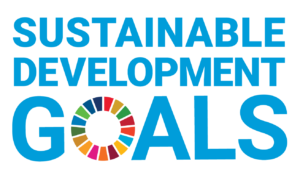Sustainable learning advances progress toward achieving the Sustainable Development Goals (SDGs).
Sustainable learning advances progress toward achieving the Sustainable Development Goals (SDGs).

The Sustainable Learning Framework is an approach that guides Childhood Education International’s work to create innovative solutions to education challenges while supporting children’s holistic development.
The Sustainable Learning Framework is a set of disciplines and practices that contribute to a continually evolving, healthy learning ecosystem where knowledge is co-created and shared in community.
The concept is rooted in the United Nations’ Sustainable Development Goals (SDGs) – 17 interconnected goals that serve as an urgent call for action toward “peace and prosperity for people and the plant, now and into the future.”
The Sustainable Learning Framework is a set of five disciplines and 16 practices that make them actionable. It can be utilized at the individual, institutional, and systems levels.
Learning design is driven by a teaching philosophy, a clear purpose, evidence-informed methods, and authentic assessment.
Focus on Practice – A student-centered approach in which students learn about a subject by working in groups to solve an open-ended problem using methods that are typically hands-on.
Rely on Evidence – A teaching practice or approach that is supported by robust and reliable research. Evidence-informed pedagogy facilitates the ability to generalize teaching practices and repeat any instructional approach within various environments and contexts.
Co-Create Content – Use finding and selecting, grouping, and contextualizing, preserving, maintaining, archiving, and sharing digital content as an opportunity for community building, critical inquiry, a platform to demonstrate interpretative and creative abilities, and to develop digital literacies of both faculty and students.
Use Multiple Modalities – Channel information or anything that communicates meaning in some way and enables the use of a combination of text, images, motion, or audio.
Systems Thinking is the discipline of acting with the knowledge that you and your organization’s work are part of a larger learning ecosystem. It calls for using tools and methods designed for working successfully in complex environments of interconnected relationships.
Organize for Collective Impact – Work together, across silos, sharing information to solve complex problems.
Distributed Leadership – Use organizational structures such as communities of practice and communities of inquiry to define challenges and opportunities and foster innovative solutions.
Design for Complexity –Dynamically adapt instruction, assessment, content, and activities to suit contexts, abilities, or preferences of learners and learning providers.
Teachers and systems of learning use multiple feedback protocols for improving, reframing, and transforming practice and policy.
Start with a Theory of Change – Demonstrate how credible, achievable outcomes, defined with stakeholders, are expected to be achieved over the short, medium, and longer term.
Embed Reflection in Work – Use structured reflection on experience to inform planning and action.
Generate Analytics that Guide Improvement – Provide practitioners access to and use data to improve teaching, policy, methods, tools, and technologies.
Assures every participant has the access, support, materials, and safety they need to be active learners, are provided opportunities for peer-to-peer learning, and are included in shaping the learning experience.
Provide Facilitated Discourse – Assure that online discussion (asynchronous and synchronous) has a stated purpose, a facilitator, builds community, asks genuine, open-ended questions, and provides summaries of the exchange.
Use Open Education Resources – Leverage teaching, learning, and research materials in any medium – digital or otherwise – that reside in the public domain or have been released under an open license that permits no-cost access, use, adaptation, and redistribution by others with no or limited restrictions.
Convene Structured Learning in Communities – Communities of Practice are groups of people who come together to improve their practice and co-create knowledge in a structured and facilitated format in which a shared language is used for discussion, reflection, and content creation. In teaching, Communities of Inquiry are focused on developing teaching presence, social presence, and cognitive presence.
Provide open systems for online teaching and learning.
Enable Connected Learning Pathways – Connect courses, people, and resources to develop unique personalized learning pathways.
Co-Design Innovations – Gather users and developers to innovate technology and develop platforms, apps, plug-ins and other augmentations that customize the performance of the technology.
Provide Secure Spaces – Meet established standards for privacy, integrity, availability, and security risk analysis.
The Sustainable Learning Framework was created by Dr. Diana Woolis and is licensed under a Creative Commons Attribution-NonCommercial-NoDerivatives 4.0 International License. CE International is grateful to have learned about Sustainable Learning from Dr. Woolis during her tenure at the Center for Professional Learning and is excited to know that she continues to develop resources on sustainable learning as a free and open public good. Learn more here.